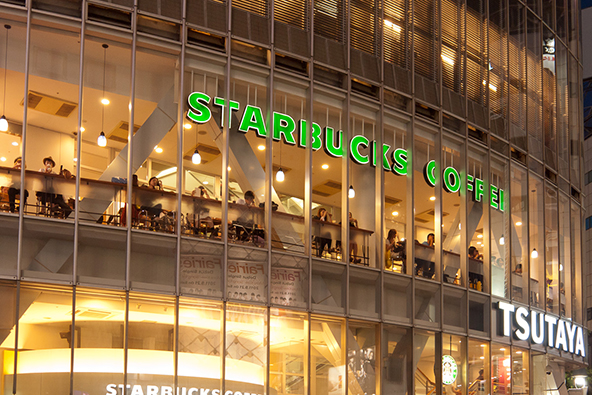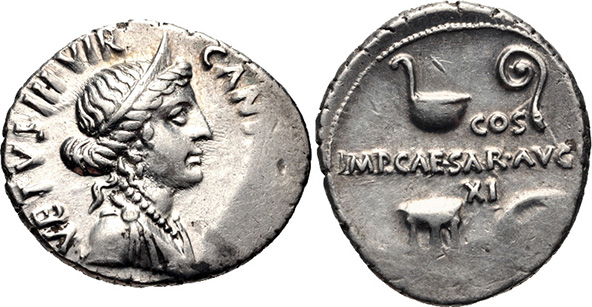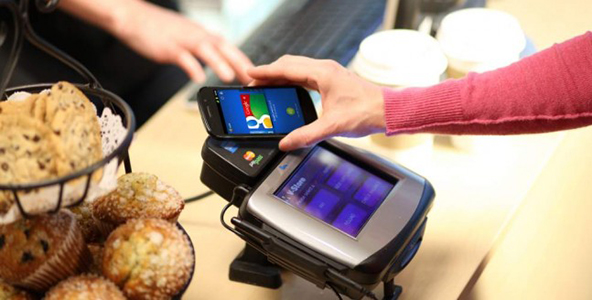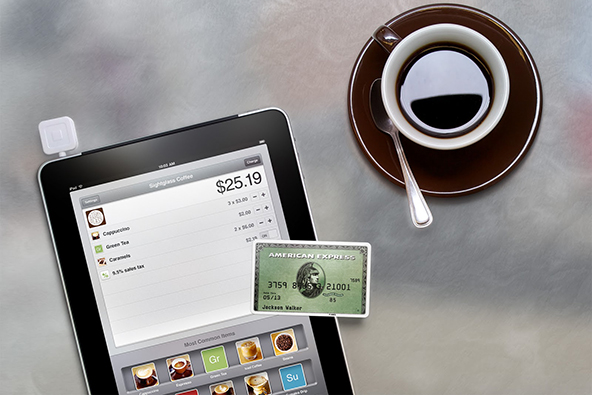Starbucks ‘Mobile Pay’ Is a Huge Hit, but There Is a Better Way

Starbucks has been extremely successful with its mobile payments platform, Venture Beat’s Jennifer Van Grove reminds us today. The coffee chain has processed more than 42 million m-payment transactions since its Mobile Pay platform was launched in January 2011, Van Grove tells us. Back in December, Starbucks reported that “there have been 26 million mobile transactions to date,” so evidently the growth rate is accelerating.
As regular readers know, we have been covering the latte maker’s progress on the m-payment front since its platform was still in a test mode a year and a half ago and have praised it for its simplicity. And yet, we always felt that Starbucks’ Mobile Pay was not the most consumer-friendly way to do mobile payments. In our very first post on the topic, we asked:
Would you want to have to use a separate app for each retailer and provide sensitive personal information over and over again?
Well, just as it was the case in November 2010, the answer to this question today is unequivocally negative.
Starbucks Mobile Pay
Mobile Pay’s success is in large measure due to Starbucks’ decision to build their m-payment platform around an existing and distinctly unglamorous technology. At a time when the near-field communication (NFC) technology was all the rage and seemingly everyone started building digital wallets around it, Starbucks chose to rely on the far more prosaic 2-D scanning devices that they already had deployed in their stores and linked to the point-of-sale (POS) terminals. And consumers loved it.
Here is how it works. Before you can use your phone to pay for your latte, you need to get the Starbucks prepaid card, which is the only payment method you can use with Mobile Pay. Then you need to download Starbucks’ mobile app, link your card to it and you can start using it. Whenever you are ready to check out, the app will display a 2-D barcode on your phone’s screen, which will be scanned by the barista and the payment will be completed. When you need to replenish your prepaid card’s balance, you can do so using PayPal or a credit card.
There Must Be a Better Way
So if Starbucks customers are so eagerly adopting its m-payment service, why am I still not embracing it? Well, I have a couple of issues with Mobile Pay, both of which have to do with limitations.
My first issue is that Mobile Pay can only be used at Starbucks locations. By contrast, all digital wallets are designed to allow users to make payments at any participating merchant. Of course, the mobile wallet concept suffers from its reliance on NFC, which requires that existing POS terminals are retrofitted or replaced with ones that are NFC-compatible, which is both expensive and time consuming. However, when (and it is not “if”) the infrastructure is in place, consumers will be able to use one service for payment at any merchant. The alternative is that we download an app for every retailer whose stores we are frequenting and get one of its prepaid cards. And that brings me to my second issue.
I, and many other consumers, just don’t want to be using prepaid cards, even ones that are as good as Starbucks’ (and it is a good one, as prepaid cards go). There is absolutely no reason anyone with an access to credit cards should be using prepaid cards, which have no effect on your credit history and offer no rewards. And anyway, why should I get a card, which I can only use at Starbucks? Should I do the same for Whole Foods, Trader Joe’s, Marshalls? Where does it end? It just makes no sense to me.
The Takeaway
A digital wallet that supports all types of cards, as well as other payment methods, and places no restrictions on the locations where it can be used for payment, would be a much more consumer-friendly service than Starbucks’ Mobile Pay. It will truly be a digital version of our leather wallets and I believe that it will become just as indispensable. Well, Google Wallet is already offering that, but it is not doing well. Isis will be launching this summer, but only in two cities.
The major issue, as I already mentioned, is that the infrastructure is not yet in place. Additionally, there are only a couple of NFC-enabled smart phones that are currently available, although that will change by the end of the year. So it is a question of time and while we are waiting, Starbucks will keep gathering steam.
Image credit: Wikimedia Commons.



Starbucks has been using mobile payments in a much better way than any other retailer, tech company or a financial company. Yes, it would be better if we were able to use one card at all of the merchants where we shop, but in the absence of such an option, Starbucks is the best one available.
While Google is struggling with its mobile wallet, including security and privacy issues, not just as a business proposition, Starbucks seems to have a better understanding of mobile payments than anybody else. Good job, Starbucks!
Starbucks recognized the fact that one-third of its U.S. customers use smart phones 15 months ago and proceeded to capitalized on this fact, sparking an mobile commerce frenzy (with a caffeine twist) like nothing the retail industry had ever seen. It’s a huge success anyway you look at it.
Starbucks’ share price has done very well, perhaps partially due to its Mobile Pay success. Here is what Goldman Sachs projected about the future of the coffee chain: “We upgrade SBUX [Starbucks] shares to Buy from Neutral and add the stock to the Americas Conviction List as we believe the company is poised to enter a renewed growth phase that may see more than a doubling of EPS by 2015.” I think they like them.
With numbers like these, who would even think of building their mobile payment service around NFC? I guess that’s what the Starbucks executives are thinking as they are looking at 42 million mobile payments processed since they launched Mobile Pay in January 2011. So good for them. But yes, I agree with you. As far as consumers are concerned, Starbucks’ approach is way too restrictive.
Starbucks is showing us what a struggling latte maker can do to revitalize its business and strengthen its relationship with customers in the process through a smartphone-based mobile payment system. And by the way, don’t forget that Starbucks continues to innovate on the coffee front as well. I am not exactly a fan of new Blonde roast coffee or the new line of healthy juices, but a lot of people like them.
Well, Starbucks customers evidently like paying for their coffee with their prepaid card connected mobile phones more than you do. We will not know if they will like the choices of a mobile wallet better until one of these services can actually be used at a real retailer. Google Wallet is a bit ahead of its time, I think, but whether there will be a better time or not remains to be seen.
The implementation of Mobile Pay by Starbucks is by far the most mainstream example for what smartphone credit card processing can do for mobile payments. But we have to give Starbucks a lot of credit. The company first tested mobile payments at stores in Seattle, New York, California, as well as in some Target stores and only then it brought the technology into all of its 6,800 U.S. stores, plus another thousand stores located inside of Target stores. So they planned carefully for it and executed it brilliantly.
I’m not sure if you are aware of this, but Starbucks is being sued over its mobile payment service. California-based semiconductor-maker Maxim Integrated has filed a patent suit against Starbucks claiming that Starbucks Card Mobile and the company’s iPhone and Android applications are infringing on several of Maxim Integrated’s patents. These patents specifically cover mobile payments, so I wonder what will happen if Starbucks loses the suit.
Starbucks was right to chose 2D as a technology to build its mobile payments platform around, as proven by its subsequent success. There is a real security issue with the NFC technology, which is and will continue to be a huge problem for the mobile wallets. We saw how easy it was to hack into Google Wallet a month or two ago and I don’t think we have been assured that this flaw has been fixed in a good way.
It will be interesting to see how the Starbucks app develops as the NFC technology becomes more prevalent and I don’t think there is any question that it will. It seems to me that the likely next step for Starbucks will be to allow customers to pay just by touching their phone to the card reader, rather than having them find a bar code first.